During a brief encounter with London two weeks ago, i visited as many exhibitions as i could. Only one made me want to write a review.
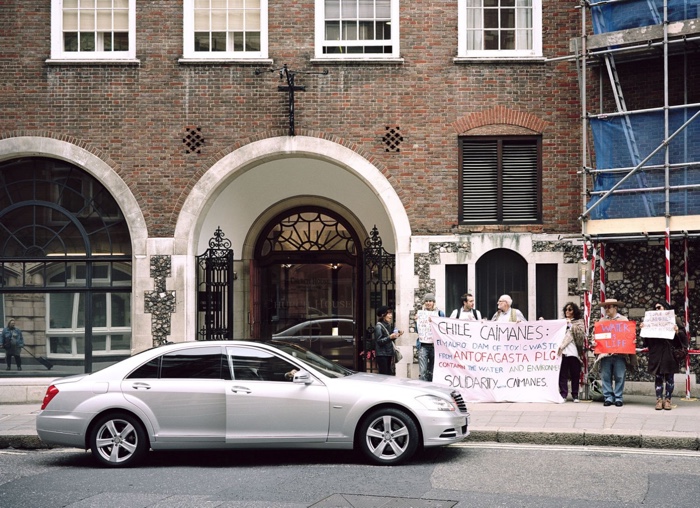
Ignacio Acosta, Demonstration outside Antofagasta PLC Annual General Meeting. Church House, London, England, 2013
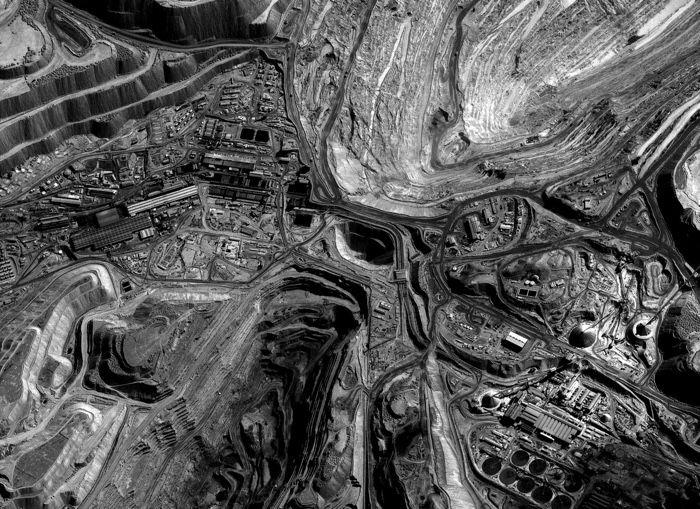
Ignacio Acosta, Satellite views of Chuquicamata corporate mining town, c. 2011. Atacama Desert, Chile. From Miss Chuquicamata, The Slag
Ignacio Acosta: Tales from the Crust at the Arts Catalyst on Cromer Street near King’s Cross St. Pancras is part of a programme of events investigating the politics of extraction across the planet.
Acosta‘s work is the perfect introduction to the topic. The Chilean artist and researcher exposes mining practices through extensive fieldwork, collaborations with both experts and local actors, visual documentation and critical writing. His show at the Arts Catalyst focuses on the social and ecological impact of the extraction of a mineral that is crucial to modernity: copper. Copper is essential to the production of wiring, motors, domestic appliances, plumbing, electronics and of course renewable energy systems and green technologies. Yet, its extraction, refining and production have a detrimental impact on both ecologies and communities.
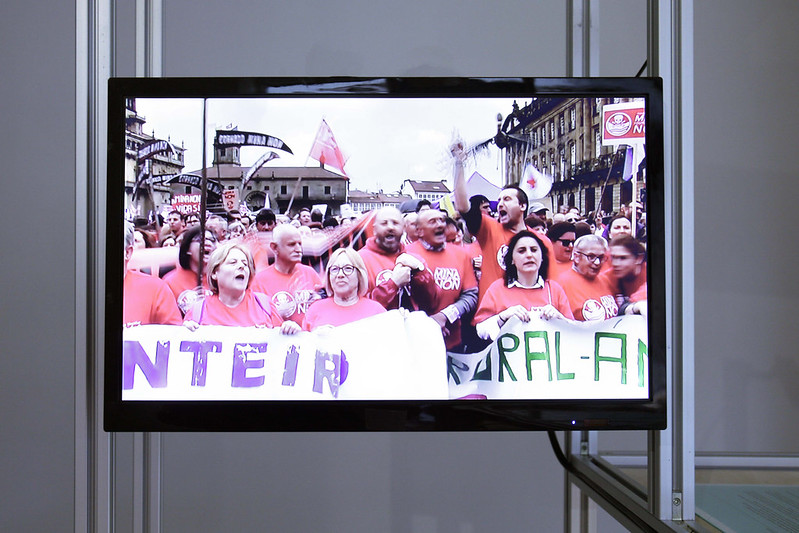
Installation view from Tales from the Crust by Ignacio Acosta at Arts Catalyst, London, 2019; photo courtesy the artist
The artist travelled to places such as Chile and Swedish Sápmi where social cohesion and the environment are threatened by copper mining. His images and texts focus not only on the damage made to communities and ecosystems but also on the local resistance to ruthless extractivist practices.
“This multifaceted spatial narrative is populated by the overlapping voices of activists, indigenous people and archaeo-astronomers – bringing together a constellation of stances rooted in the distant to recent and present geographies of extraction, exploitation and trauma. Here, filmed interviews, close-ups of resilient landscapes and cartographies of global power expose forms of human and non-human resistance.”
Each of these individual cases studies encapsulates what happens on the global scale when ecosystems and traditional ways of life “get in the way” of corporate greed and the hunt for resources.
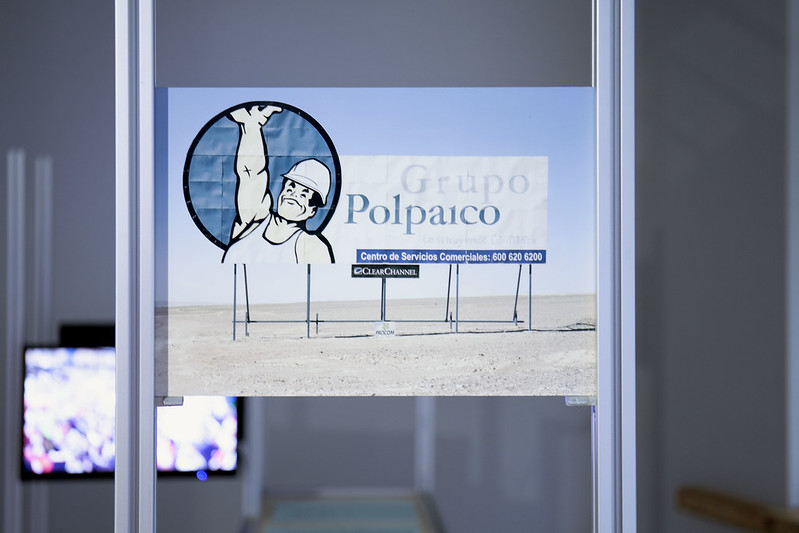
Installation view from Tales from the Crust by Ignacio Acosta at Arts Catalyst, London, 2019; photo courtesy the artist
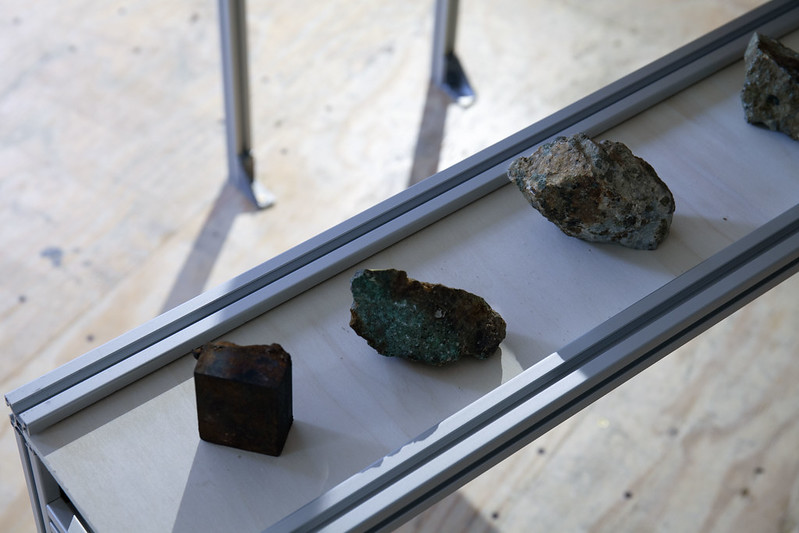
Rock samples and iron material from fieldwork conducted in Chilean and Swedish mining sites. Installation view from Tales from the Crust by Ignacio Acosta at Arts Catalyst, London, 2019; photo courtesy the artist
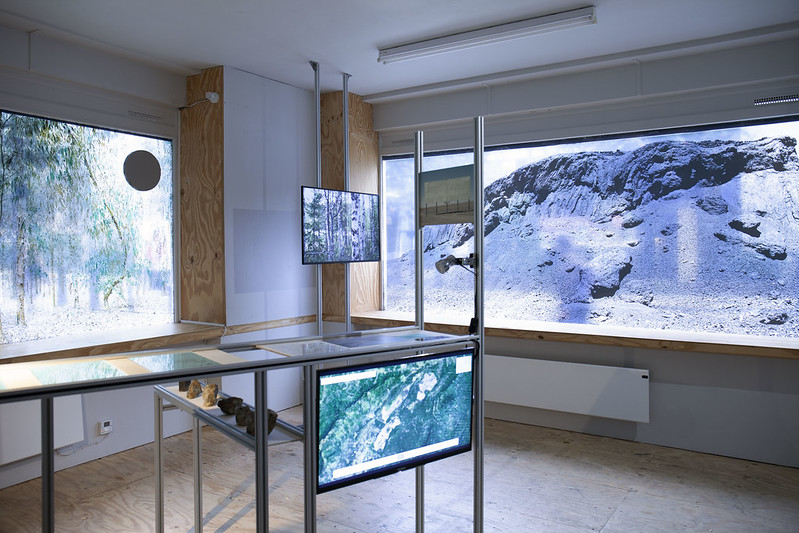
Installation view from Tales from the Crust by Ignacio Acosta at Arts Catalyst, London, 2019; photo courtesy the artist
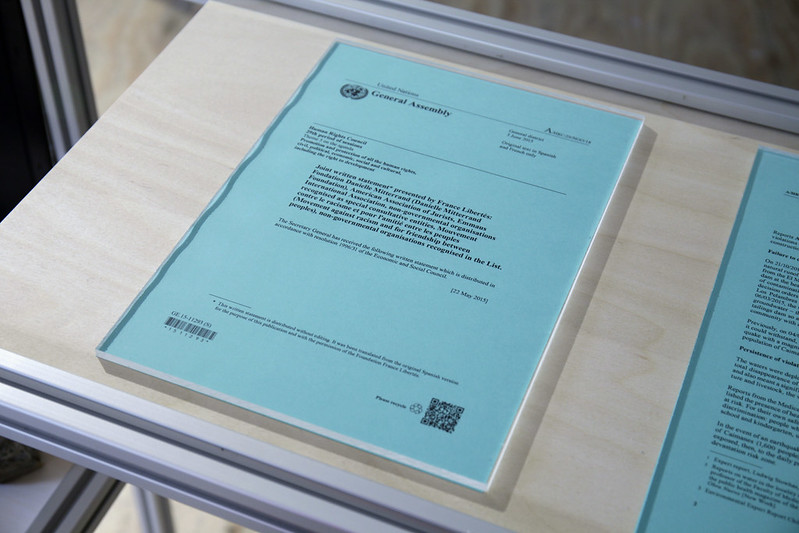
Installation view from Tales from the Crust by Ignacio Acosta at Arts Catalyst, London, 2019; photo courtesy the artist
I started the visit with the exhibition room that brings to light mining practices in Chile. The mining sector is one of the pillars of the national economy. The country provides the rest of the world with gold, copper, silver, molybdenum, iron and coal. Copper exports are particularly lucrative for Chile. Unfortunately, the water-hungry industry is concentrated in the arid north of the nation where it is threatening local ecosystems.
Acosta’s research zooms in on one of the communities affected by mining: Los Caimanes, a small agricultural town in northern Chile fighting against mining giant Antofagasta Minerals which operates the Los Pelambres open pit copper mine. The mine piles up its tailings in water contained by the colossal El Mauro dam. It is the largest toxic site in Latin America with an estimated 3,500 million tonnes of waste expected to be stored behind its high walls.
El Mauro dam is located above Los Caimanes where residents claim that the dam has dried up a local stream, contaminated underground water and thus deprived them of the fresh water necessary for agriculture. They now rely on trucks transporting water for sanitation and consumption.
There is also a human cost to the mining activity: the division of the rural mountain community. People whose livelihood depend on farming are (rightfully) irritated by the appropriation and pollution of water. Others, who have benefited from new jobs and investment, accuse the farmers of standing in the way of economic growth and progress.
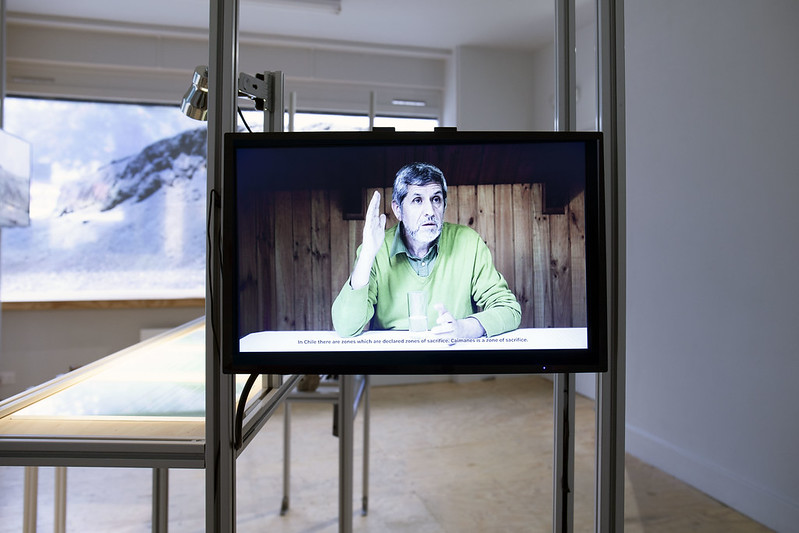
Interview with Patricio Bustamente, 2019. Installation view from Tales from the Crust by Ignacio Acosta at Arts Catalyst, London, 2019; photo courtesy the artist
The exhibition features a gripping interview with Patricio Bustamente. The researcher and activist was drawn to the issue because the mining activities were threatening archaeological sites. He was particularly concerned about the fate of the El Mauro site. Before the construction of the dam, the place was an oasis with a rich archeological heritage.
He also commented on the complicity between the mining company and the Chilean authorities, highlighting in particular how people having close connections with the company are given positions of influence in the government.
I particularly liked the translucent prints of Acosta’s photos that were covering the large windows of the Arts Catalyst gallery. I’ll only comment on two of them:
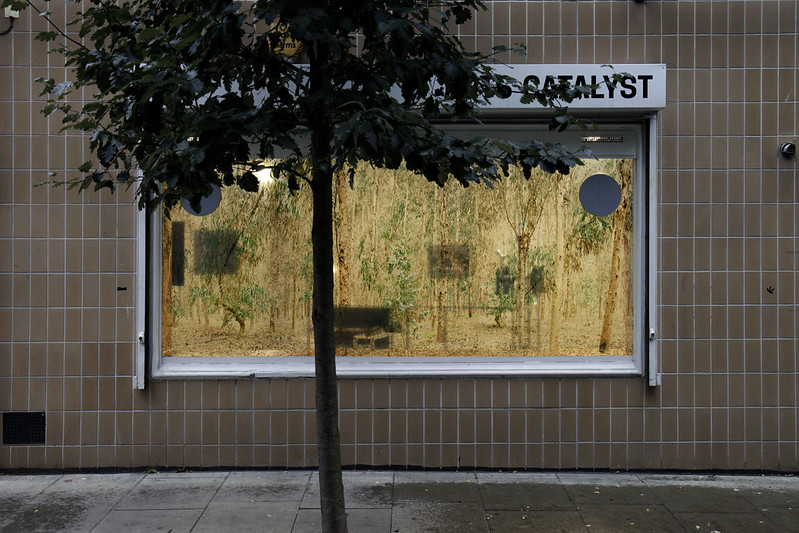
Installation view from Tales from the Crust by Ignacio Acosta at Arts Catalyst, London, 2019; photo courtesy the artist
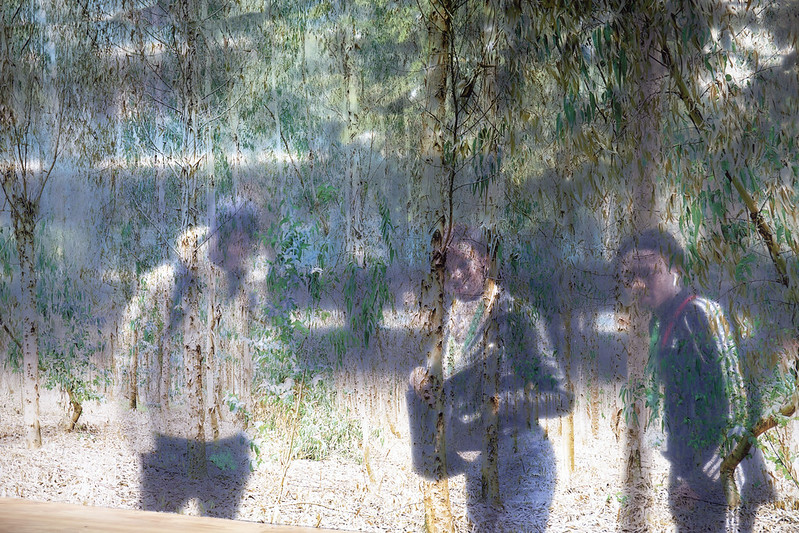
Forest of Eucalyptus planted to absorb contaminated water from Los Palambres mine. From Antofagasta Plc. Stop Abuses! (from ‘Copper Geographies’), Pupio Valley, Chile, 2012 © Ignacio Acosta. Installation view from Tales from the Crust by Ignacio Acosta at Arts Catalyst, London, 2019; photo courtesy the artist
One of the windows was covered with a photo of eucalyptus trees. They are not native from Chile but have been planted near Los Palambres for phytoremediation, a process that involves covering the surface of contaminated sites with plants in order to remove, degrade or isolate toxic substances from the environment. Which looks like a great solution to the degradation of soils caused by mining activities. However, (according to wikipedia and several other sources i consulted), Eucalyptus trees show allelopathic effects; they release compounds which inhibit other plant species from growing nearby. Outside their natural ranges, eucalypts are also criticised for sucking more water from the ground than some native tree species.
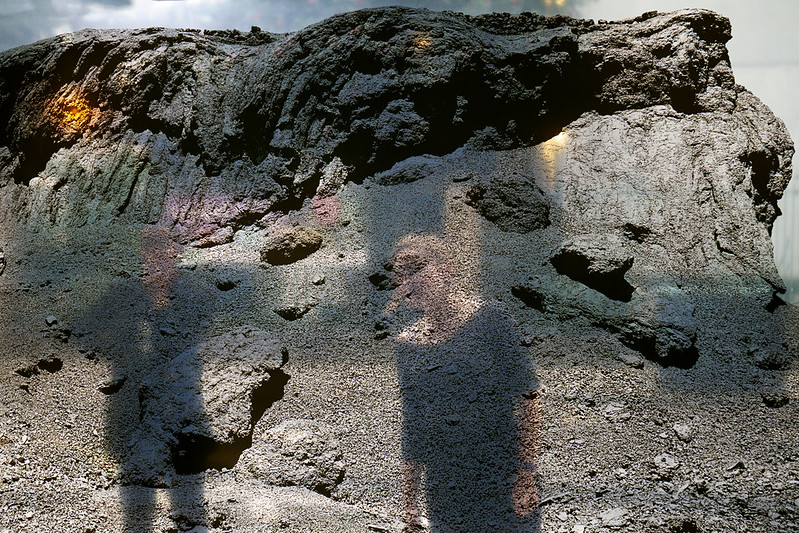
Slag heap from Panulcillo mine, now closed. Installation view from Tales from the Crust by Ignacio Acosta at Arts Catalyst, London, 2019; photo courtesy the artist
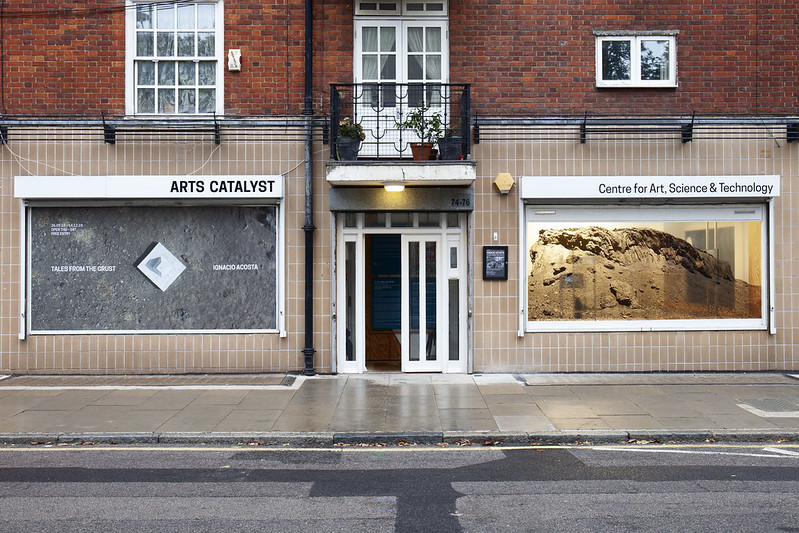
Installation view from Tales from the Crust by Ignacio Acosta at Arts Catalyst, London, 2019; photo courtesy the artist
Slag heap from the now closed Panulcillo copper mine in the Coquimbo region, north of Chile, occupy another window of the gallery. Copper extraction in the area dates back to the 19th century. The ore extracted in the region was shipped mainly to Wales and smelted in the Lower Swansea Valley. As curator Tehmina Goskar wrote “the Lower Swansea Vallery was a truly transoceanic phenomenon, involving mining/processing complexes on different continents and mobilisation of capital, labour and technology across immense distances.”
Speaking of immense distances, let’s follow the artist to the north of Sweden….
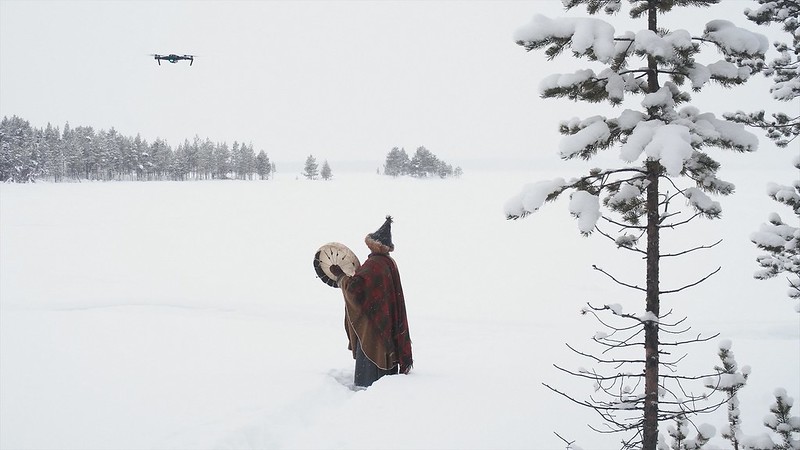
Ignacio Acosta, still from Litte ja Goabddá (Drones and Drums), Jåhkåmåhkke [Jokkmokk], Norrbotten, Swedish Sábme, 2018
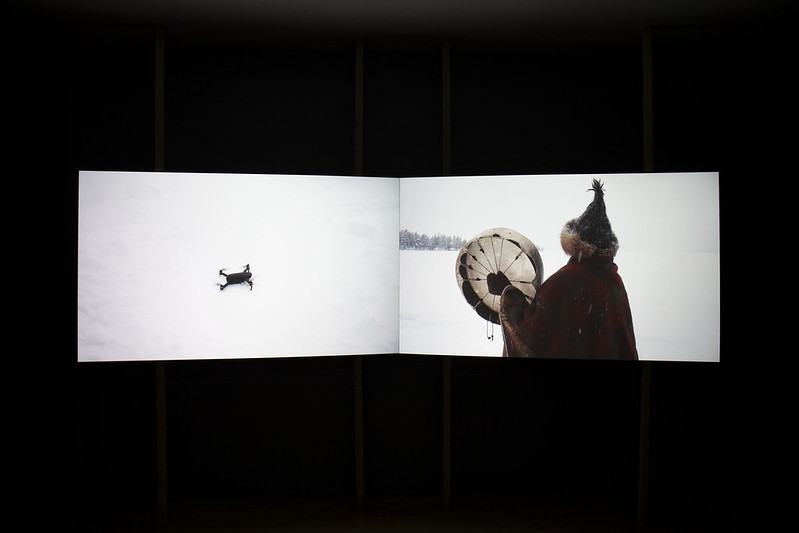
Ignacio Acosta, Litte ja Goabddá (Drones and Drums). Installation view from Tales from the Crust by Ignacio Acosta at Arts Catalyst, London, 2019; photo courtesy the artist
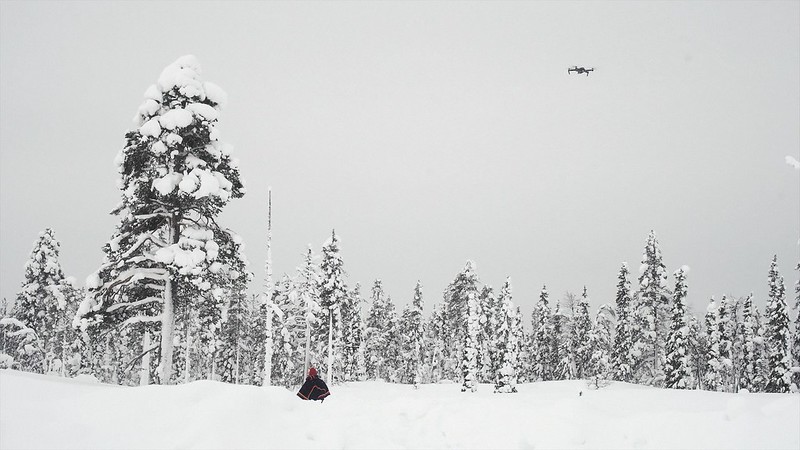
Ignacio Acosta, still from Litte ja Goabddá (Drones and Drums), Jåhkåmåhkke [Jokkmokk], Norrbotten, Swedish Sábme, 2018
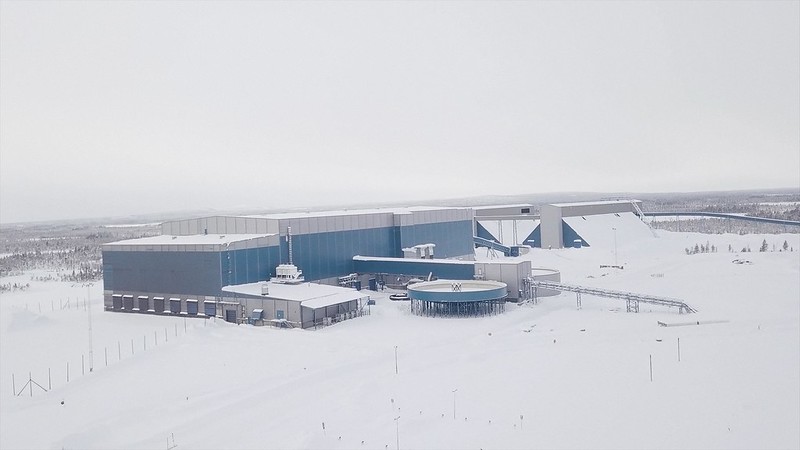
Ignacio Acosta, Pajala abandoned mine, still from Litte ja Goabddá (Drones and Drums), Jåhkåmåhkke [Jokkmokk], Norrbotten, Swedish Sábme, 2018
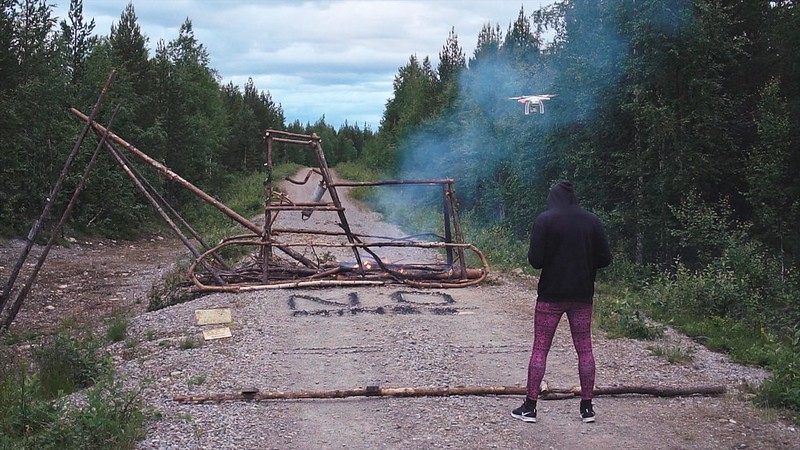
Ignacio Acosta, still from Litte ja Goabddá (Drones and Drums), Jåhkåmåhkke [Jokkmokk], Norrbotten, Swedish Sábme, 2018
Sweden’s failure to ratify the ILO Indigenous and Tribal Peoples Convention No. 169 considerably weakens any right the Sami would have over the land they live on.
That is one of the reasons why they are deeply worried about the project to exploit the Gállak North iron ore deposit. Mining exploration company Beowulf Mining PLC has submitted an application for a 25 year exploitation concession for the site. The area they covet, however, is located on the ancestral lands of the indigenous Sami people and forms part of the reindeer winter grazing lands.
A mining permit would have a detrimental impact on the fragile ecosystems, disrupt the reindeer migration paths and threaten the Sámi way of life.
Unsurprisingly, the plans to establish a mine at the site has met with resistance from the Saami people and other local communities. It has raised concerns in regard to the proposed plan to combine hydro power with tailing dam which, a safety research concluded, could jeopardize the provision of drinking water downstream.
Thanks to local resistance, the request to start the exploitation has still not been approved by the Swedish government.
Acosta’s film installation Litte ja Goabddá (Drones and Drums) explores how the Sami are using drones as a way of resisting mining exploration in northern Sweden. Based on research visits and close collaboration with local activists and Sami families, the project explores the link between drums and drones as navigation and communication tools.
Sámi, like many other indigenous communities, live in close connection with with natural forces and have a lifestyle rooted in traditions. The video demonstrates that this doesn’t stop them from using technologies such as drones in their fight against extractive violence on their territory. Diverted from their usual association with vertical control, surveillance and warfare, the drones become as counter-surveillance tools in the protests against the Gállak mining venture.
As for the drums, they are an essential element of Sámi ritualistic activities, and are used to communicate and travel between worlds and have a strong connection to Mother Earth.
Don’t miss Tales from the Crust if you’re in London, it’s a small exhibition but it offers a powerful reminder of the high price other communities are paying for the progress we enjoy.
Ignacio Acosta. Tales from the Crust is at the Arts Catalyst, Centre for Art, Science & Technology in London until 14 December 2019.
Related stories: Edi Hirose: bleak skyscrapers and erased mountains, The scars left by electronic culture on indigenous lands, A bodily experience of man-made earthquakes, HYBRID MATTERs: The urks lurking beneath our feet, Interview with Cecilia Jonsson, the artist who extracts iron from invasive weeds, Home catastrophes, wandering mining hole and limbo embassy. (My) best of the Graduation Show Design Academy Eindhoven, etc.
